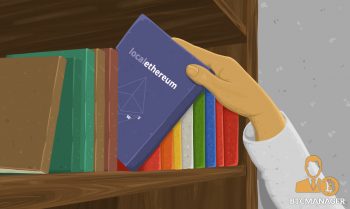
Trading on decentralized exchanges (DEX) is increasing in popularity as users of centralized exchanges continue to be plagued by hacks, nefarious account closures, and long KYC onboarding process due to increasing regulatory scrutiny on digital asset exchanges.
LocalEthereum is one of these decentralized trading platforms and works, as the name suggests, somewhat like the popular peer-to-peer bitcoin exchange LocalBitcoins with the key difference being that LocalEthereum is decentralized, leverages smart contracts, and does not hold user funds.
What is LocalEthereum?
LocalEthereum is a decentralized peer-to-peer marketplace that enables cryptocurrency traders to anonymously buy and sell ether (ETH) in exchange for fiat currency. The platform does not hold user funds and utilizes Ethereum smart contracts to execute trades between transacting counterparties, thereby providing an added layer of fund security that centralized exchanges do not offer.
Traders who want to buy ether have the option to do so using their preferred fiat currency and a variety of payment methods, including PayPal, Western Union, Skrill, and international wire transfers, among others.

(Source: LocalEthereum)
LocalEthereum stands out among other decentralized trading platforms as it is straightforward and intuitive to use for new Ethereum users, why the exchange has managed to grow substantially in popularity since its launch in October 2017.
Furthermore, the project is self-funded and did not hold conduct a token sale to fund its development. This has added credibility to the startup venture as its operators decided not to jump onto the “ICO money train” to cash in on the ICO mania and, instead, focus on delivering a great platform that will generate revenue through its trading service.
The marketplace charges sellers 0.25 percent and buyers 0.75 percent of the transaction as a trading fee, and there are currently over 50,000 traders on the platform, according to the LocalEthereum website.
How to Buy Ether (ETH) on LocalEthereum
Buying ether (ETH) on LocalEthereum is intuitive and easy to execute even for complete beginners.
First, you need to find an offer that suits your investment needs. Offers can be filtered by payment method and location, and are – by default – listed by the popularity of the trader. This was the platform helps ensure you trade with the most trusted counterparties on the marketplace.

(Source: LocalEthereum)
Once you have chosen your desired payment method, location, and the price you are happy to trade at, you can click on the “BUY” button.
This will lead you to the next page, where you can input the amount of ETH you want to purchase and click on “Open Trade.”
Once you have clicked on “Open Trade” you can discuss the details of the transaction with your trading counterpart in an end-to-end encrypted chat.

(Source: LocalEthereum)
The ETH will then be deposited in the escrow smart contract by the seller and you have two hours to make the payment for the funds to be released into your LocalEthereum wallet. At this point, the user interface will change and a “Mark As Paid” button will appear.
Once you have paid using the agreed upon payment method, you can click on the “Mark As Paid” button and wait for the seller to release the ETH from escrow.
When the seller has received payment confirmation from the agreed upon payment method, they release the funds from escrow and you will see the ETH appear in your LocalEthereum web wallet.
What to Look Out For When Trading on LocalEthereum
LocalEthereum is a safe and reliable peer-to-peer marketplace for ether traders. Nonetheless, there are certain safety precautions users should take before trading on this platform.
First and foremost, you need to make sure you are on the correct localethereum website and have not accidentally clicked on a phishing scam site.
Secondly, when trading in a peer-to-peer exchange including LocalEthereum, it is imperative to only conduct transactions with users who have high ratings. This reduces the chance of getting scammed out of your funds.
Thirdly, make sure you use the platform’s escrow function when trading. If your counterpart does not want to use the escrow that should be considered a major red flag and it would probably be best to find another counterparty to execute your trade.
Since LocalEthereum does not read your communications (unless there is a dispute), should your trading counterparty act suspicious in any way, report them and trade with someone else.
Should You Trade on LocalEthereum?
LocalEthereum is a user-friendly and secure marketplace to buy and sell ether. However, it does not offer any other digital tokens and is thus somewhat limited in its scope for traders who prefer decentralized exchanges over their centralized counterparts.
Additionally, it charges a 0.75 percent buyer fee, which users are charged on top of the bid/offer they will need to pay. Depending on the available liquidity in the location and payment method you require, the bid/offer charge can be high, so there may be cheaper options to buy ether depending on your geographic location.
Also, LocalEthereum does not offer any extra features, like charts, a news ticker or a “toolbox” and it is not easy to find counterparties that are willing to trade large volumes, which makes this trading platform less useful for seasoned professional traders.
LocalEthereum is best suited for less price sensitive Ethereum investors who are looking to buy or sell smaller amounts of ether in exchange for fiat currency. For this, LocalEthereum is an excellent platform.
The post A Beginner’s Guide to Trading on LocalEthereum appeared first on BTCMANAGER.
Source and More information: A Beginner’s Guide to Trading on LocalEthereum
Author: BTCManager.com

Leave a Reply